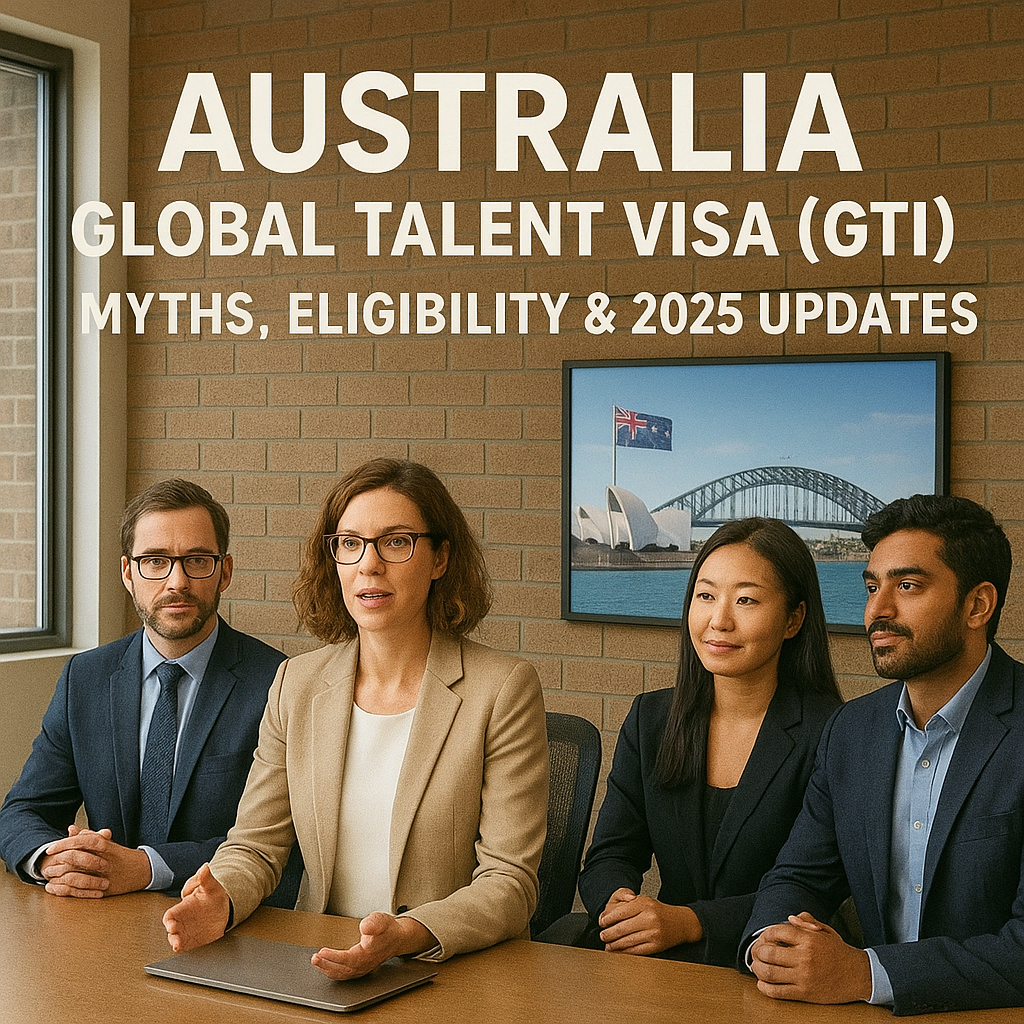Discover the truth about the Australia Global Talent Visa (GTI): eligibility, target occupations, and the transition to the National Innovation Visa.
Introduction
The Australia Global Talent Visa (GTI) has long been a magnet for the world’s brightest minds, yet confusion persists about who qualifies and how the process works. With recent changes and the introduction of the National Innovation Visa, it’s time to separate fact from fiction and clarify what it really takes to secure this elite pathway.
Myth 1: “The GTI Visa Is Open to All Skilled Workers”
Fact:
The GTI Visa is not a general skilled migration route. It is reserved for individuals with internationally recognized records of exceptional achievement in one of Australia’s priority sectors. To meet GTI Visa eligibility, you must show outstanding accomplishments—such as awards, patents, or leadership roles—and demonstrate your expertise through tangible results. Applicants must also prove they can attract a salary above the Fair Work High Income Threshold, set at AUD 162,000 for 2025. Only those who can provide evidence of global recognition and a strong professional track record in a target sector will be considered.
Myth 2: “You Don’t Need a Nominator or Endorsement”
Fact:
A valid nomination is essential for the GTI Visa. You must be nominated by an Australian citizen, permanent resident, eligible New Zealand citizen, or an Australian organization with a national reputation in your field. The nominator’s endorsement must clearly highlight your achievements and the benefit your expertise will bring to Australia. Without this endorsement, your application cannot proceed.
Myth 3: “The GTI Visa Is Still Available in 2025”
Fact:
As of December 2024, the Global Talent Visa program is closed to new applications and has been replaced by the National Innovation Visa (subclass 858). The new visa continues to target exceptionally talented migrants in innovation-driven sectors, using similar eligibility criteria and focusing on global talent that can drive Australia’s economic and technological growth.
GTI Visa Eligibility & Target Occupations
To be eligible for the GTI Visa (and now the National Innovation Visa), applicants must:
-
Demonstrate international recognition and a history of outstanding achievement in their sector.
-
Work in one of Australia’s Global Talent Visa target occupations, such as:
-
Agri-food and AgTech
-
Energy
-
Health Industries
-
Defence, Advanced Manufacturing, and Space
-
Circular Economy
-
DigiTech
-
Infrastructure and Tourism
-
Financial Services and FinTech
-
Education
-
-
Show the ability to attract a salary above the Fair Work High Income Threshold (AUD 162,000 in 2025).
-
Secure a nomination from a recognized Australian individual or organization.
-
Meet functional English requirements and pass health and character checks.
Recent high-achieving PhD or Master’s graduates in a target sector may also be eligible.
Application Process: Step-by-Step
-
Submit an Expression of Interest (EOI):
Provide detailed evidence of your achievements, salary, and sector expertise. -
Receive a Global Talent Identifier:
If eligible, you will be issued a unique identifier to proceed. -
Gather Supporting Documents:
Collect nomination letters, proof of income, academic qualifications, and evidence of international recognition. -
Apply Online:
Lodge your application for the National Innovation Visa (subclass 858) with all required documents. -
Await Decision:
Processing times are fast-tracked, often within 1–3 months for complete applications.
The National Innovation Visa: What’s Changed?
The National Innovation Visa (NIV) now replaces the GTI program, but the core focus remains: attracting world-class talent in future-focused sectors. The NIV is a permanent visa, offering a streamlined process and the same high bar for international recognition and sector impact.
Conclusion
The Australia Global Talent Visa (GTI) and its successor, the National Innovation Visa, are not open to all—they are designed for the world’s most accomplished professionals in critical sectors. By understanding the real eligibility criteria, nomination requirements, and the transition to the NIV, you can make informed decisions about your migration pathway.
